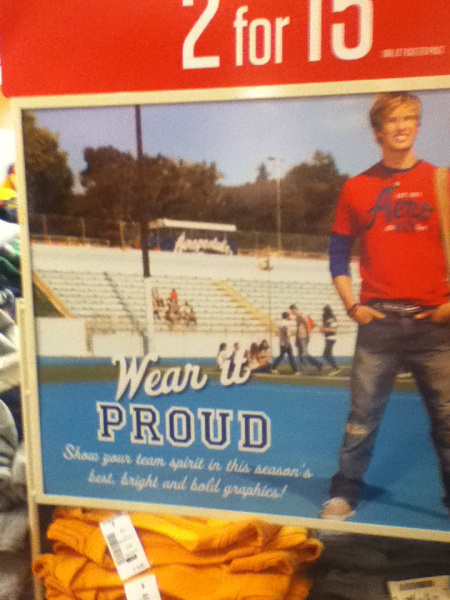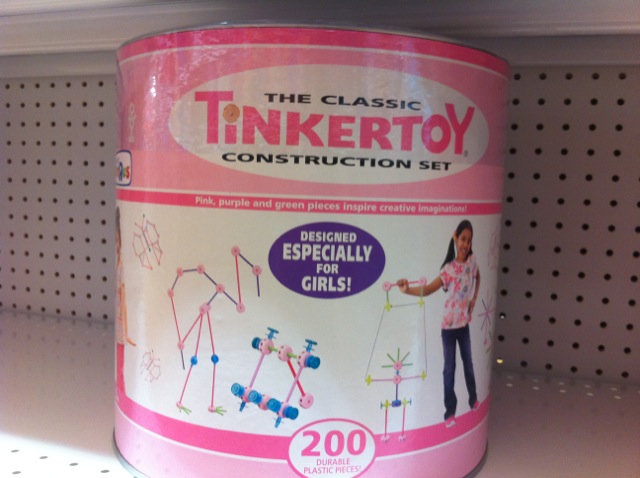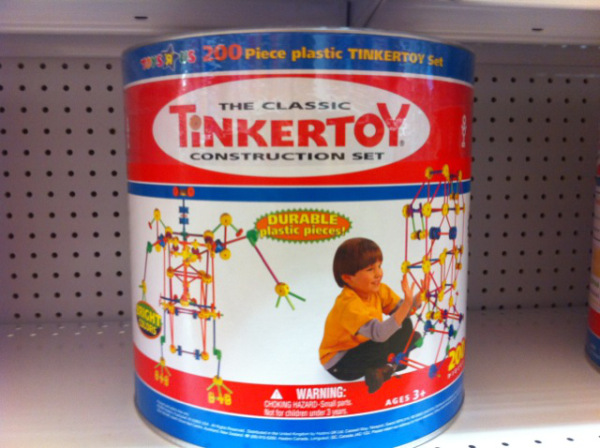By Dr. Jennifer Shewmaker; crossposted with permission from JenniferShewmaker.com

There are very clear lines drawn in advertisements directed to children between who (and what) toys are for, boys or girls. Packed into these ads are consistent messages about behaviors, interests, and activities that are appropriate for girls and boys. Research has found that television commercials for children overwhelmingly present gender stereotypes, with pastel colors, cooperation, and indoor play associated primarily with girls and competition and outdoor play associated with boys (Kahlenberg & Hein, 2010).
In a study conducted by Johnson and Young (2002), the researchers examined the themes of gendered voice and words present in children’s television commercials. Clear gender patterns were found in the types of verbs that were used:

- Action, competition and destruction rating high in advertisements that featured boys and boy-targeted products.

- Verbs that focused on limited activity and feelings and nurturing rated high in advertisements that featured girls and girl-targeted products.
Another pattern that was found involved the use of verbs of agency or control. These words were found more often in boy-oriented advertisements than girl-oriented advertisements, with a ratio being over 4:1.

When we consider the use of the word power and related words, 21% of boy oriented advertisements used the words power or powerful, but in all of the girl-oriented advertisements, there was only one incident of the word “power” being used, and it was in the context of identifying the maker of a Barbie car (Power Wheels). Johnson and Young conclude:
“Toy makers and their advertisers either make no effort to associate or may consciously avoid associating girl-toys with power or their potential to transfer power to their users” (Johnson & Young, 2002, p. 477).

Dr. Jennifer Shewmaker is a psychologist whose research includes the exploration of the responses of girls aged 8-11 to gendered toy packaging, with an emphasis on stereotype threat response and gender salience.
* * *
Editor’s Note:
USA Toy Experts compiled a survey of more than 1500 parents representing 48 states. Almost all of those taking the survey were moms (98% were female caregivers). Here are the toy buying trends we can report:
55% of moms did not believe their daughters preferred to play with pink.
41% of moms report their sons play with kitchen tools
60% of moms report their sons play with plush animals
* * *
Hilliard, L.J. & Liben, L.S. (2010). Differing levels of gender salience in preschool classrooms: Effects on children’s gender attitudes and intergroup bias. Child Development, 81, 1787-1798.
Johnson, F.L. & Young, K. (2002). Gendered voices in children’s television advertising. Critical Studies in Media Communication, 19, 461-480. Kahlenberg, S.G. & Hein, M.M. (2010). Progression on Nickelodeon? Gender-role stereotypes in toy commercials. Sex Roles, 62, 830-847. Miller, C.F., Lurye, L.E., Zosuls, K.M., & Ruble, D.N. (2009). Accessibility of gender stereotype domains: Developmental and gender differences in children. Sex Roles, 60, 870-881. Pike, J.J. & Jennings, N.A. (2005). The effects of commercials on children’s perceptions of gender appropriate toy use. Sex Roles, 52, 83-91.
